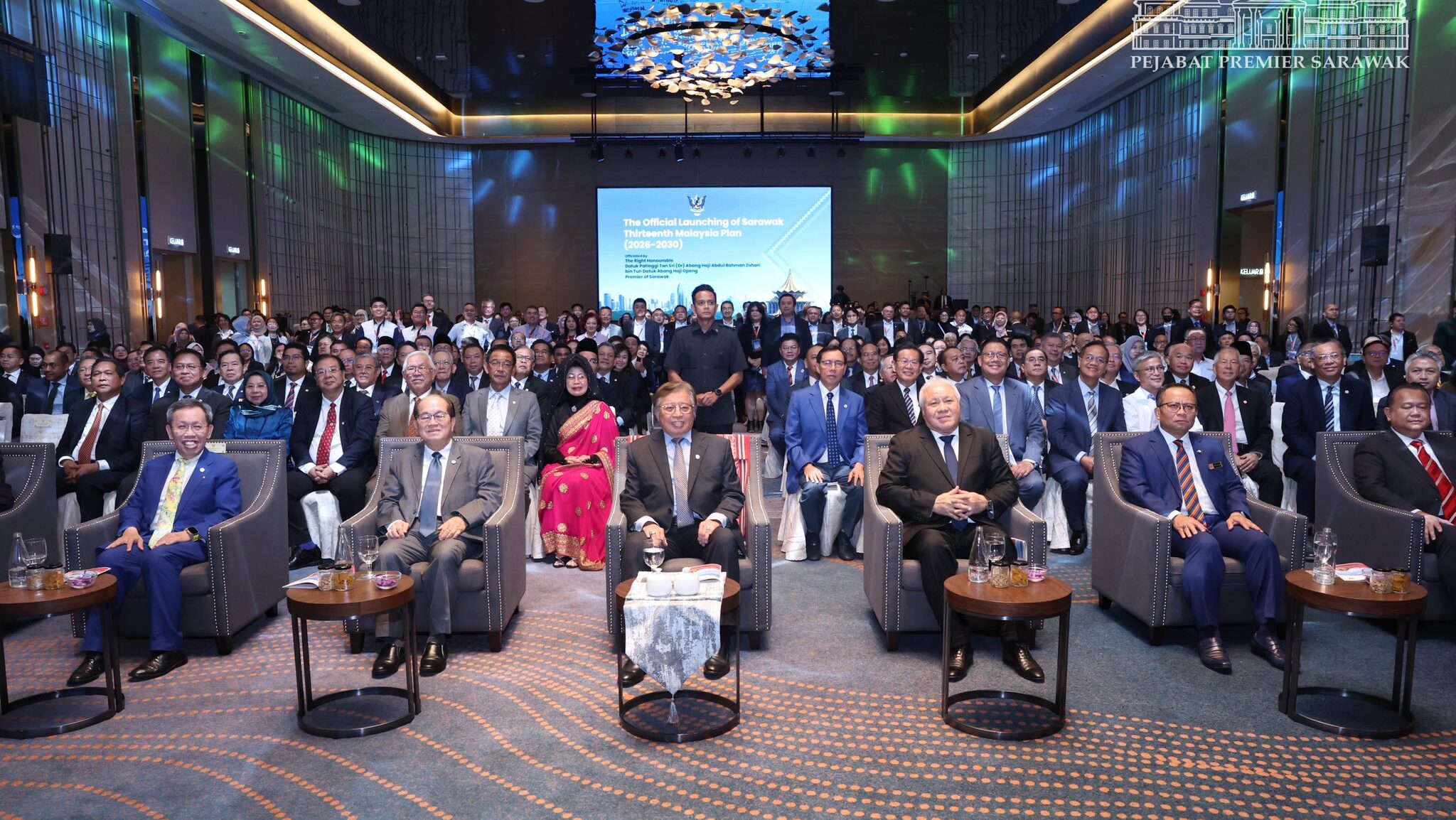KUCHING – Sarawak has officially set its sights on a powerful new chapter of growth and transformation as Premier Datuk Patinggi Tan Sri (Dr) Abang Haji Abdul Rahman Zohari bin Tun Datuk Abang Haji Openg launched the 13th Malaysia Plan (2026–2030) during the Sarawak Economic Conference 2025 held in Kuching today.
The ambitious plan builds on the foundation of the Post COVID-19 Development Strategy (PCDS) 2030, steering Sarawak towards becoming a high-income, sustainable, and globally competitive state by the end of this decade.
“The 13th Malaysia Plan is our bridge between today and 2030. It aligns our economic ambitions, social priorities, and environmental commitments into one shared vision — a Sarawak that is resilient, competitive, compassionate, and sustainable,” said the Premier in his keynote address.
He revealed that Sarawak’s economy has shown strong fiscal resilience, with state revenue almost doubling from RM7.6 billion in 2021 to RM14.2 billion in 2024. This achievement, coupled with the World Bank’s recognition of Sarawak as a high-income region in 2023, highlights the government’s effective financial management and economic diversification.
Under the 13MP, Sarawak aims to double its economy’s size from RM148.2 billion in 2024 to RM282 billion by 2030, targeting a median household income of RM15,000.
“We are no longer just resource-rich — we are opportunity-rich,” said Abang Johari. “Our transformation is anchored on clear policies, green transition, and credible leadership.”
Energy transformation remains a key driver of Sarawak’s growth. The state plans to expand renewable energy capacity to 10 gigawatts by 2030 and 15 gigawatts by 2035, with over 60 percent of current power derived from hydropower. Projects like the Bintulu Transitioning Industrial Cluster (TIC) and hydrogen-based industries are positioning Sarawak as the “Battery of ASEAN”, a regional hub for clean energy innovation.
In line with its industrial and digital ambitions, Sarawak is also advancing the Sarawak Semiconductor Initiative, in partnership with the UK’s CSA Catapult, to develop a complete semiconductor value chain — from chip design to packaging — supported by AI and smart manufacturing technologies.
By 2030, 30,000 SMEs are expected to transition to digital platforms, while 45,000 MSMEs will benefit from entrepreneurship and innovation programmes, linking local businesses to global supply chains.
“Digital transformation will be the heartbeat of Sarawak’s economy, driving competitiveness, inclusion, and sustainable innovation,” the Premier said.
To ensure successful delivery, ministries and agencies will implement performance-based monitoring and results-based budgeting, ensuring transparency and accountability.
“Better execution means better outcomes, and better lives for all Sarawakians,” he added.
As Sarawak steps into this new phase, the Premier called for unity, innovation, and shared responsibility to shape a stronger, greener, and more inclusive future.
“Transformation is a continuous journey; each generation carries the work forward. Together, we will build a Sarawak that is strong, prosperous, and future-ready.”
The Sarawak Economic Conference 2025, themed “Transforming for a Sustainable and Competitive Future”, brought together policymakers, industry leaders, and investors to strategize on Sarawak’s growth and global competitiveness under the 13th Malaysia Plan.

